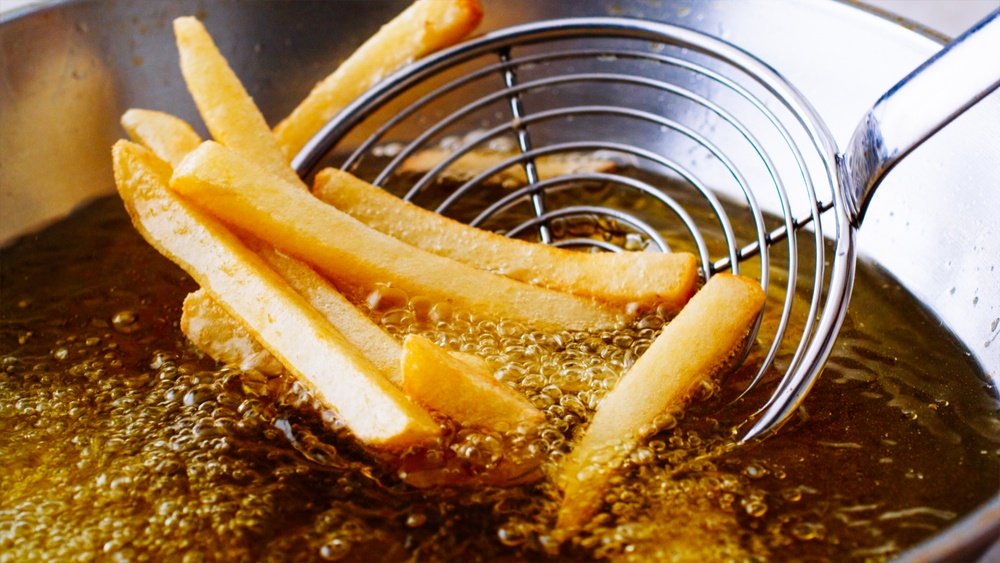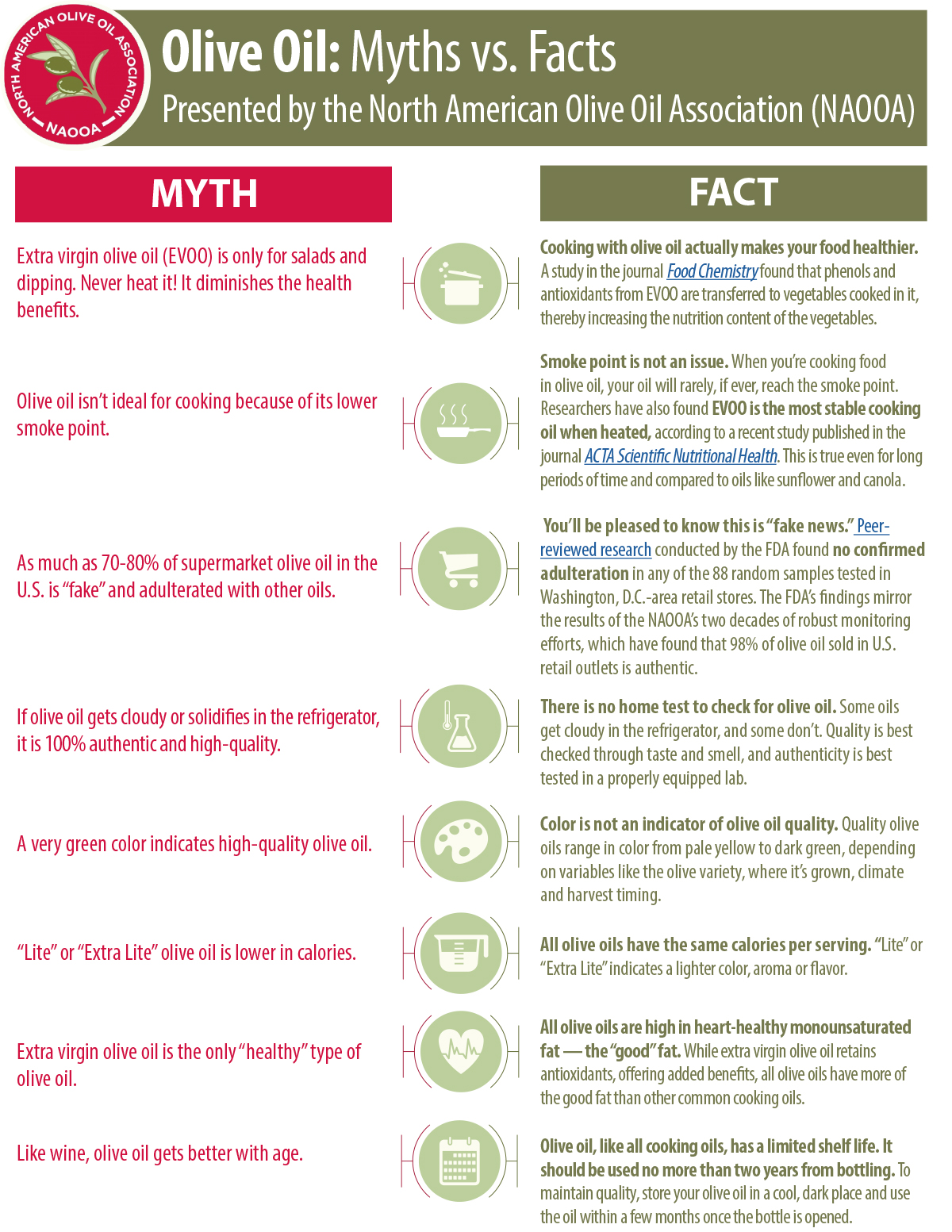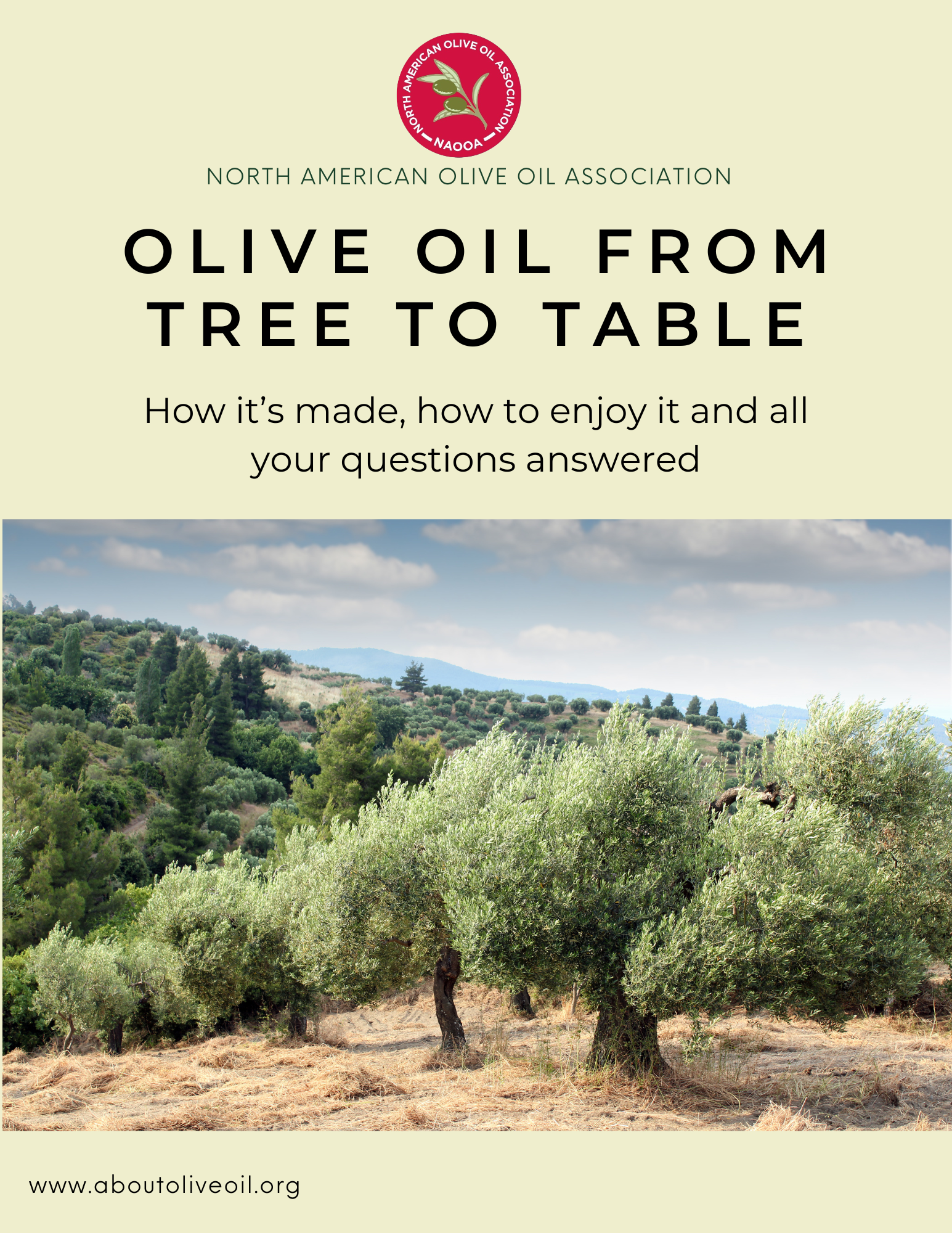
Only 25% of all olive oil users in the USA feel very or extremely knowledgeable about olive oil. Here are some common misconceptions that we found in a study we conducted:
- The color of olive oil is related to its quality
The color of an olive oil has no bearing on its quality. Olive oil can range from yellow/golden to green. The hue is influenced by a variety of factors which include the growing conditions, type of olive and the time of harvest. - Light olive oil has fewer calories than other olive oils
All grades of olive oil contain the same number of calories and fat content. Light, or extra-light on the label is an indication of the flavor of the olive oil. Light-tasting olive oil is the perfect choice when looking for an oil that won’t alter the flavor of a dish. - Like wine, olive oil gets better with age
Olive oils are rich in oleic acid and minor compounds which make them very stable. However, unlike wine, as olive oil ages, the aroma and flavor will dissipate over time. The degradation in quality accelerates with exposure to heat, oxygen and light. Learn how to store olive oil. - Extra virgin olive oil is for cold or raw use only
Contrary to popular belief, olive oil, including extra virgin olive oil (EVOO) is ideal for all types of cooking. The smoke point of EVOO is high enough for home cooking and recent studies have shown that extra virgin olive oil is the most stable cooking oil. - High-quality olive oil turns cloudy when placed in the refrigerator
Almost all oils will become cloudy and eventually solidify at cold temperatures. There is no simple magic home test to check for olive oil authenticity.
*The North American Olive Oil Association conducted a 2014 National Attitude & Usage Study. The national online survey was conducted from February 12-20, 2014 and surveyed 2,002 national consumers in the nine U.S. Census regions. Participants must have used olive oil in the past six months, must have been the primary/shared household grocery shopper and/or meal preparer.




